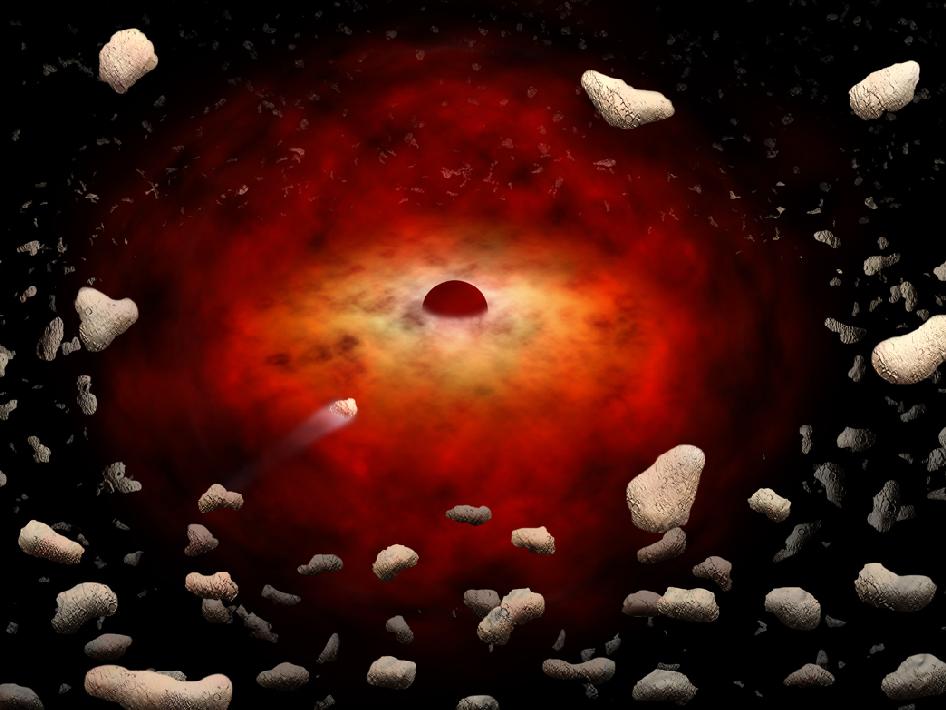We're open daily! View holiday hours
Science News
Asteroid Snacks
February 15, 2012

Sagittarius A*, the black hole in the middle of our galaxy, snacks upon asteroids, or at least that's a new theory from researchers at the University of Leicester. Scientists also estimate that the black hole has hundreds of trillions of asteroids to sustain its hunger.
For years, NASA's Chandra X-ray Observatory has observed flares coming from Sagittarius A* (Sgr A*), but never understood the cause. The flares last a few hours with brightness ranging from a few times to nearly one hundred times that of the black hole's regular output.
The British astronomers, publishing in the Monthly Notices of the Royal Astronomical Society, suggest there is a cloud around Sgr A* containing trillions of asteroids and comets, stripped from their parent stars. Asteroids passing within about 100 million miles of the black hole, roughly the distance between the Earth and the sun, would be torn into pieces by the tidal forces from the black hole.
These fragments then would be vaporized by friction as they pass through the hot, thin gas flowing onto Sgr A*, similar to a meteor heating up and glowing as it falls through Earth's atmosphere. (Wired has a great simulation of this.) A flare is produced and the remains of the asteroid are swallowed eventually by the black hole.
"An asteroid's orbit can change if it ventures too close to a star or planet near Sgr A*," says co-author Sergei Nayakshin. "If it's thrown toward the black hole, it's doomed."
As Universe Today reports:
Basically, the black hole is eating asteroids and then belching out X-ray gas.
The authors estimate that Chandra is only able to observe flares from asteroids larger than about six miles in radius. Sgr A* also may be consuming smaller asteroids, but these would be difficult to spot because the flares they generate would be fainter.
Planets thrown into orbits too close to Sgr A* could meet a similar fate, though this would happen much less frequently, because planets are not as common. Such a scenario may have been responsible for a previous X-ray brightening of Sgr A* by about a factor of a million about a century ago. While this event happened many decades before X-ray telescopes existed, Chandra and other X-ray missions have seen evidence of an X-ray "light echo" reflecting off nearby clouds, providing a measure of the brightness and timing of the flare.
"This would be a sudden end to the planet's life, a much more dramatic fate than the planets in our solar system ever will experience," states lead author Kastytis Zubovas.
Very long observations of Sgr A* will be made with Chandra later in 2012 that will give valuable new information about the frequency and brightness of flares and should help to test the model proposed here to explain them. This work could improve understanding about the formation of asteroids and planets in the harsh environment of Sgr A*.
Illustrations: NASA/CXC/M.Weiss